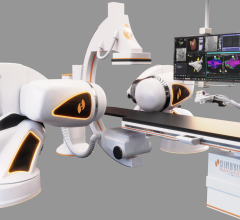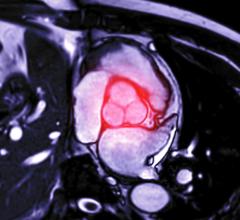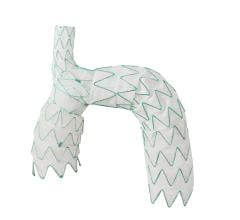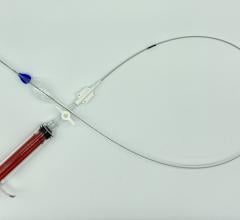
August 11, 2010 – New sizes of the SoloPath TransFemoral Endovascular Access Catheter were recently cleared by the U.S. Food and Drug Administration (FDA). The new sizes provide the potential to treat a larger patient population.
The device allows access to the larger vascular anatomy at a relatively small catheter size and is then expanded to provide a conduit for the delivery of larger diameter devices. It offers a percutaneous delivery method for large femoral/iliac artery stent grafts, aortic stent grafts and percutaneous heart valves.
A major clinical market for the SoloPath catheter is in the delivery of stent grafts for the treatment of aortic aneurysms (AAA stent grafts). These stent grafts require large catheter delivery systems. They are implanted minimally invasively as a substitute for conventional open surgical procedures to treat ruptured aneurysms.
The annual market for such stent grafts is approximately $400 million and growing 20 percent per year.
The SoloPath Controlled Deployment Technology (CDT) is a different approach to procedures requiring minimally invasive access to remote sites within the body. The SoloPath enters the body at approximately one-half the diameter of conventional access sheaths, is very flexible and provides superior navigation through the vascular anatomy.
Once in position, the device is deployed utilizing radial expansion to expand the sheath and remodel the tissue/vasculature in order to provide unrestricted access for the delivery of therapeutic devices. Early studies indicate that this Controlled Deployment Technology can allow the physician to perform an easy, one-step access procedure that can potentially reduce vascular/tissue trauma and virtually eliminate the need for other pre-operative steps (e.g., vascular stenting), which are often required for access with conventional devices.
The SoloPath allows minimally invasive access in a manner that is potentially less traumatic to the arterial vasculature compared to devices currently in use. By eliminating a number of surgical maneuvers, use of the SoloPath may reduce procedural time, surgical expense and patient recovery time.
For more information: www.onsetmedical.com


 September 18, 2025
September 18, 2025 









